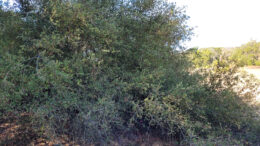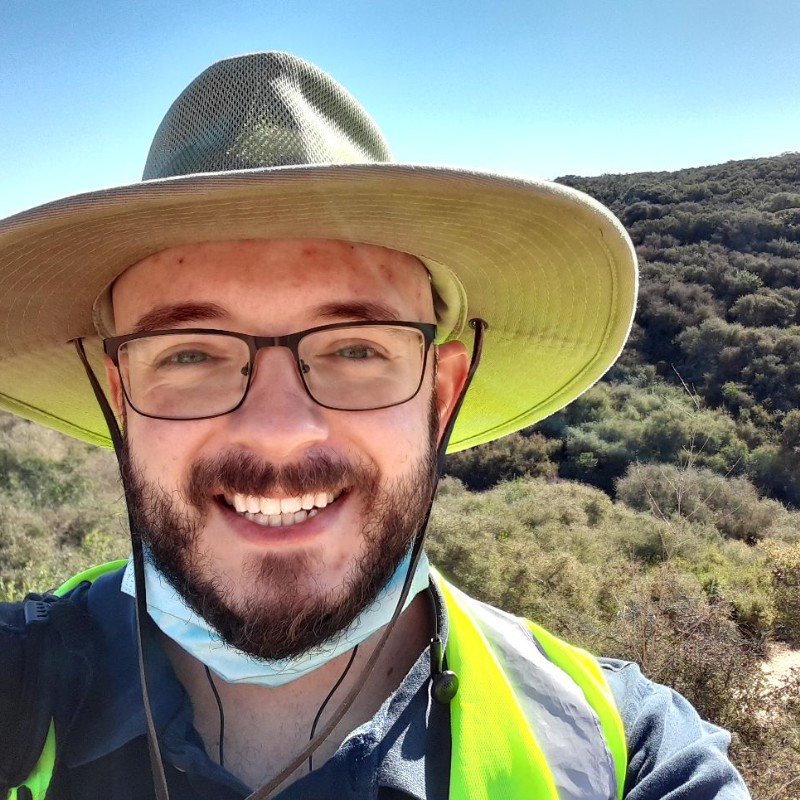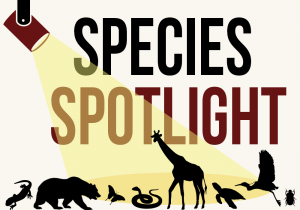 At first glance the hills and valleys covered in coastal sage scrub oak are little more than a featureless green swath. On closer inspection, however, you can recognize it for what it truly is: the beating heart of one of the most genetically rich ecosystems on the planet. Birds, insects, mammals, fungi, and even some other plants find refuge under the boughs of coastal sage scrub oak, while water drawn up from its deep roots spreads out to sustain ground-dwelling organisms.
At first glance the hills and valleys covered in coastal sage scrub oak are little more than a featureless green swath. On closer inspection, however, you can recognize it for what it truly is: the beating heart of one of the most genetically rich ecosystems on the planet. Birds, insects, mammals, fungi, and even some other plants find refuge under the boughs of coastal sage scrub oak, while water drawn up from its deep roots spreads out to sustain ground-dwelling organisms.
Species name:
Coastal sage scrub oak or Nuttall’s scrub oak (Quercus dumosa)
Description:
The coastal sage scrub oak rarely grows more than about 7 feet tall, but it can spread outward a great distance thanks to its lateral branches and multiple trunks. The trees’ small, spiny leaves emerge in the spring soft and bright green, but gradually toughen and darken to a dusty dark green by summer. Their acorns tend to be thin and elongated, almost conical.
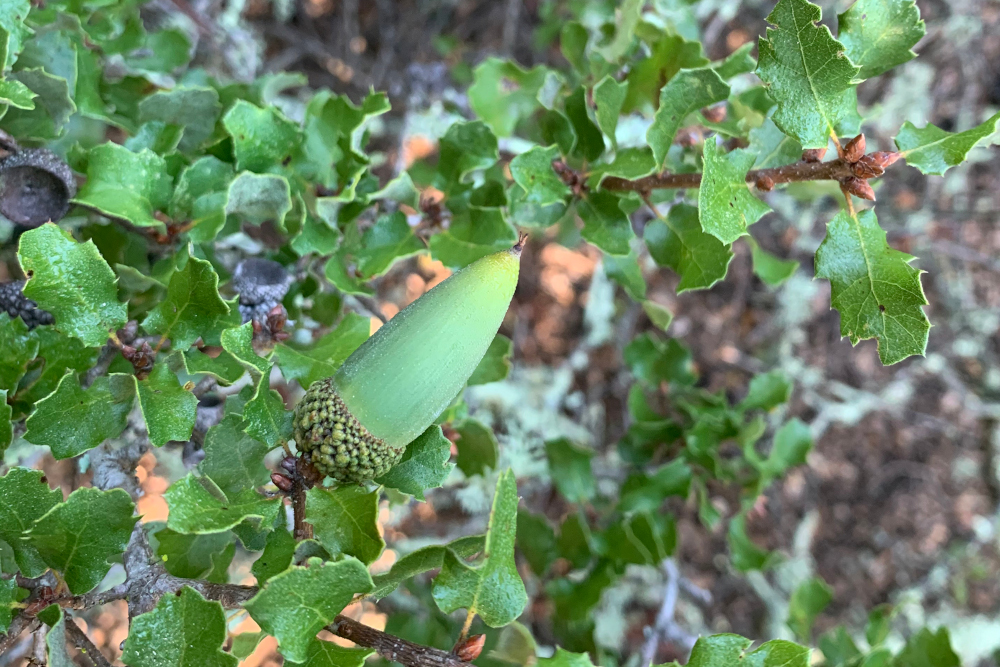
Where it’s found:
The coastal sage scrub oak, as its name implies, is found along coastal areas in Southern and Baja California. The full extent of its range is the subject of spirited debate, as it shares many similar physical characteristics with other scrub oaks found more inland. In San Diego County, the remaining populations of coastal sage scrub oak exist in fragmented populations, usually in wildlife reserves, like islands in a sea of urban development.
IUCN Red List status:
Endangered
Major threats:
Urban development destroyed much of this tree’s habitat, and its remnant population still faces this threat, along with several others. The introduction of grasses and other highly flammable nonnative species, like eucalyptus, have increased fire frequency and intensity. Escaped ornamental plants and grasses can outcompete oak saplings for light, space, and water. And climate change is resulting in disruptions to precipitation, which stresses all populations.
Notable conservation programs or legal protections:
The San Diego Zoo Wildlife Alliance is spearheading the development of new ex situ conservation methods, including the use of tissue culture and cryopreservation, to prevent further loss of the coastal sage scrub oak’s genetic diversity. Through partner networks, such as the Global Conservation Consortium – Oak and the Center for Plant Conservation, we exchange information and know-how with many partner organizations. Each organization can specialize in some method of preventing the loss of a species, whether that be working with local, state, or federal authorities; technology development and implementation; reforestation and land restoration; or what might be eventually the most important method, reaching out to the general public to show them how they can make a difference, large or small. The coastal sage scrub oak, as well as the other endangered species native to the coastal sage scrub and chaparral ecosystem, requires focused and sustained effort from all these methods, so, by participating in networks, we effectively pool our strengths.
My favorite experience:
While collecting tissue samples after a spring rain, I took a moment to look at the tracks imprinted into the soft ground. Animal prints were everywhere — mule deer, raccoon, fox, opossum, roadrunner, and what I hoped were those of an exceedingly large bobcat and not a mountain lion. I rarely saw any of these animals during the day but, thanks to the rain, it was clear that they were all around me — present but hidden within the oaks.
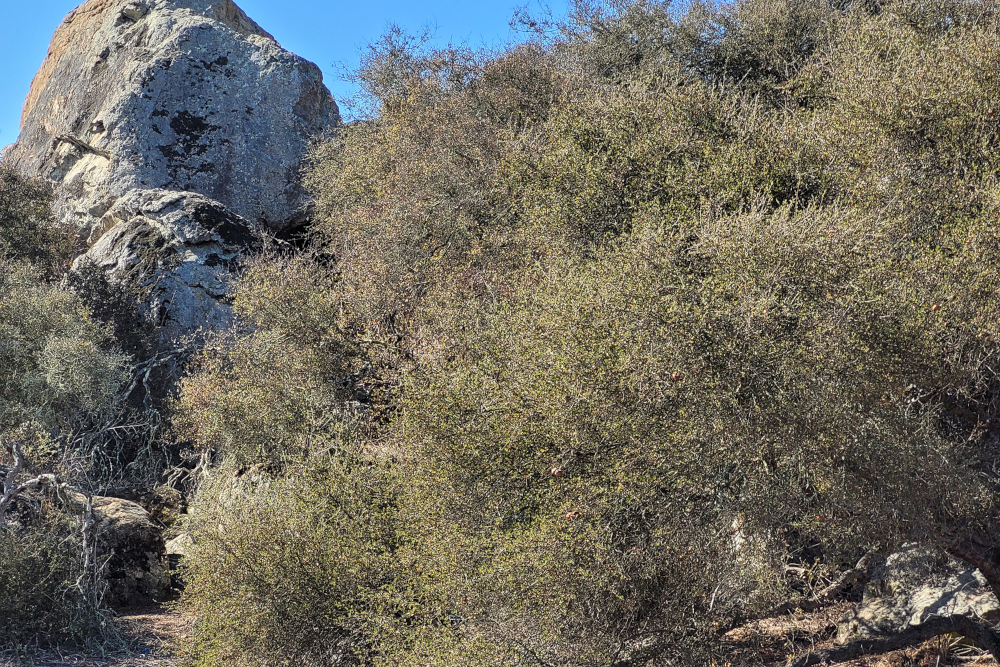
What I could see, however, were the many birds flying from tree to tree, reminding me of fish swimming among outcrops of coral. Insects buzzed all around. Galls created by tiny wasps were starting to grow from some of the oaks. By summer, some of these galls would grow to the size and color of a peach, bobbing slowly in wind scented with wildflowers, sunbaked dust, and sagebrush. I knew that under my feet deep roots reached toward the precious groundwater that would sustain the forest during the dry season, and spreading from those roots were mycorrhizal fungi that would work with the oaks to support each other.
I grew up among the firs, cedars, hemlocks, and maples of the Pacific Northwest. I always thought forests needed to be composed of tall, majestic trees christened with carpets of rolling moss. Yet this sea of small, scraggly oaks held so much life. My perspective grew. It’s one thing to read about this ecosystem and another matter entirely to truly see it and understand how precious it is.
Key research:
Do you live in or near a threatened habitat or community, or have you worked to study or protect endangered wildlife? You’re invited to share your stories in our ongoing features, Protect This Place and Species Spotlight.


